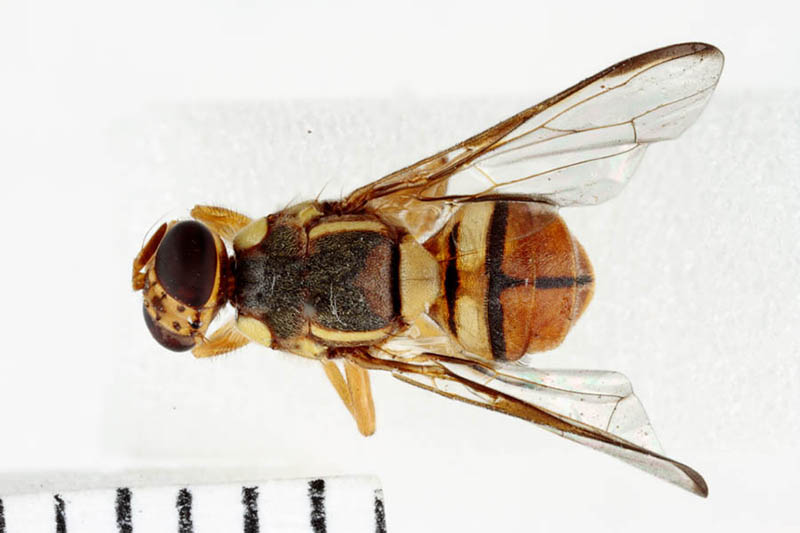Situation update – 10 April 2025
Biosecurity New Zealand's response to this detection has closed. We did not find any other fruit flies after the first one was discovered on 20 February.
Legal controls on fruit and vegetable movements have ended.
Actions taken when the fruit fly was detected
On 20 February 2025, a single male Oriental fruit fly was identified from a routine surveillance trap in the Auckland suburb of Birkdale.
A large-scale biosecurity response followed to determine whether there were more fruit flies in the area. If more flies were found, the plan was to get rid of any population to protect the horticulture industry and home gardens.
The response involved 7 weeks of trapping, with some 100 traps regularly inspected, and windfall fruit from the area examined. While our investigations were underway, legal controls were placed on the movement of fruit and produce out of a controlled area in Birkdale to prevent the spread of any other fruit flies that may have been present.
No further Oriental fruit flies were found during the 7 weeks, giving us confidence that there was not a breeding population in the area. On 10 April 2025, movement controls were lifted and the response closed.
Birkdale Controlled Area Notice (CAN) is revoked
The Controlled Area Notice (CAN) enacted on 21 February 2025 restricted the movement of certain fruits and vegetables out of the Controlled Area to help prevent the spread of any fruit flies that may have been present.
This CAN was revoked (removed) on 10 April 2025.
Revocation of Controlled Area Notice
Why we don't want Oriental fruit flies in NZ
The Oriental fruit fly (Bactrocera dorsalis) can affect over 300 hosts including apples, kiwifruit, citrus, and tomatoes.
A population of Oriental fruit fly would cause control costs and production losses for commercial growers. Some countries might stop accepting our exported produce.
About the Oriental fruit fly
The Oriental fruit fly is widespread in Africa and Asia. In Oceania, it is present in Christmas Island, Papua New Guinea, Palau, Hawaii and Tahiti. However, it is absent from Australia.
Adult flies lay eggs into fruit. The young stages (maggots) feed inside the fruit, causing it to rot and become unmarketable.
Adult flies:
- are a little larger than a housefly (6 mm to 8 mm long)
- have a dark "T" shaped marking on the abdomen (the part behind the waist)
- usually have a bright yellow and orange abdomen (but can vary)
- have clear wings.
The thorax (behind the head) is dark or near black with 2 near parallel yellow thin strips running down each side of the thorax.
The female fly has a pointed "sting" to lay eggs inside fruit (but she can't sting or bite people).
Larvae look like white long-grain rice.

Find out more about Oriental fruit flies
Image files
Oriental fruit fly on a fruit [JPG, 328 KB]
Oriental fruit fly dorsal [JPG, 144 KB]
Oriental fruit fly lateral [JPG, 76 KB]
What you can do – keep vigilant
It requires a big effort from all New Zealanders to keep fruit flies out.
If you think you’ve found this fruit fly or possibly seen its maggots in fruit:
- photograph it
- capture it (if you can)
- call 0800 809 966.








